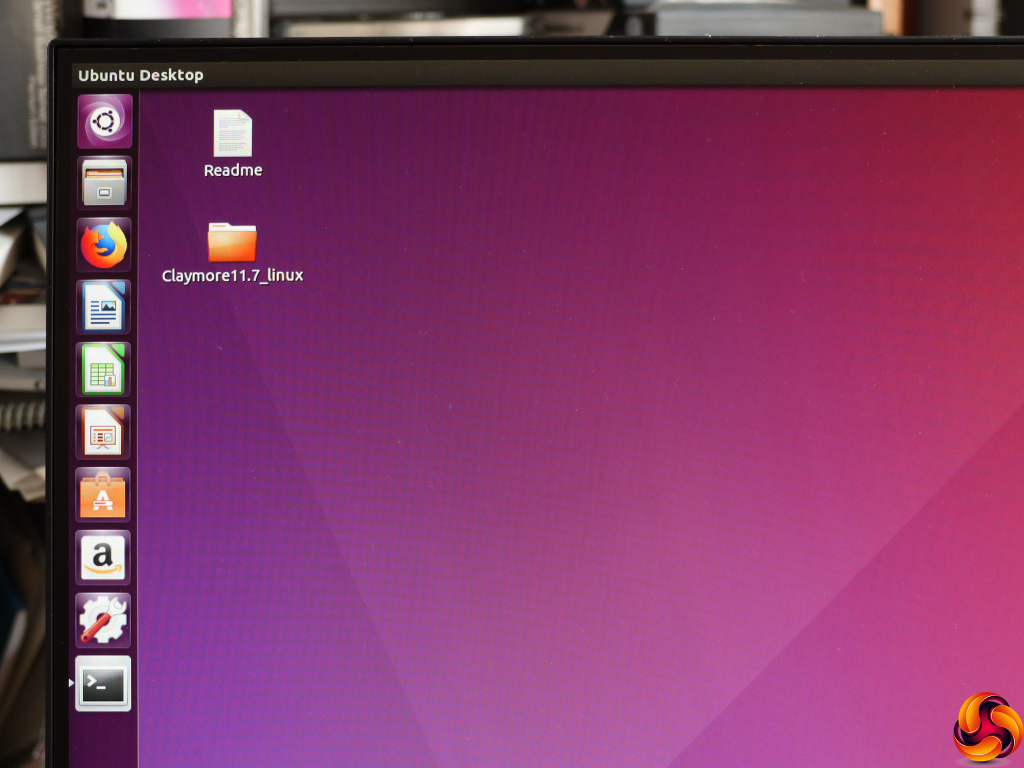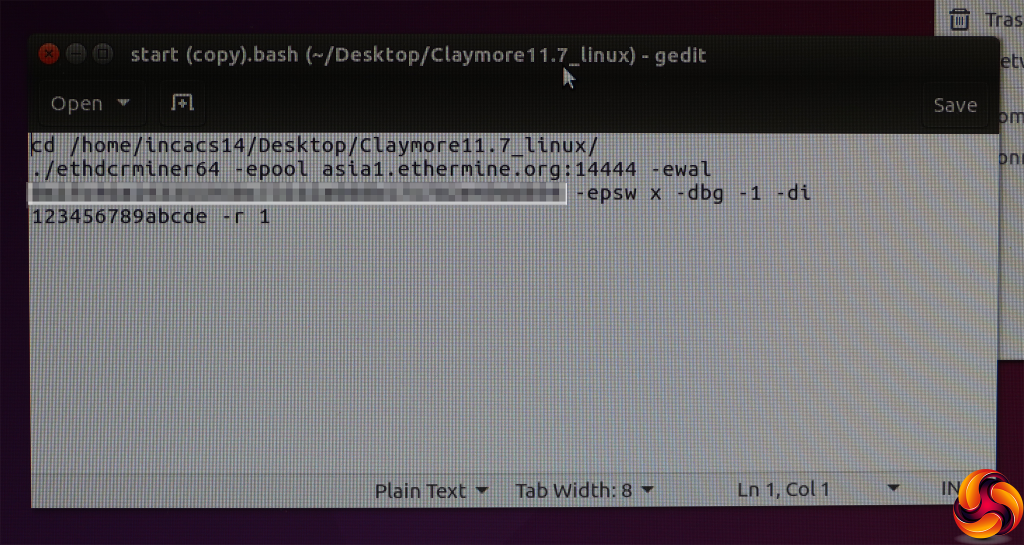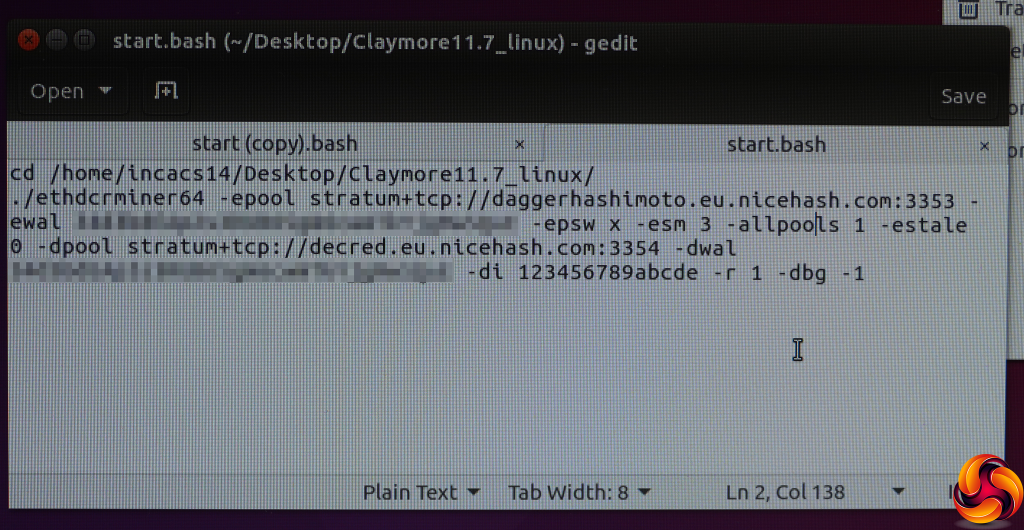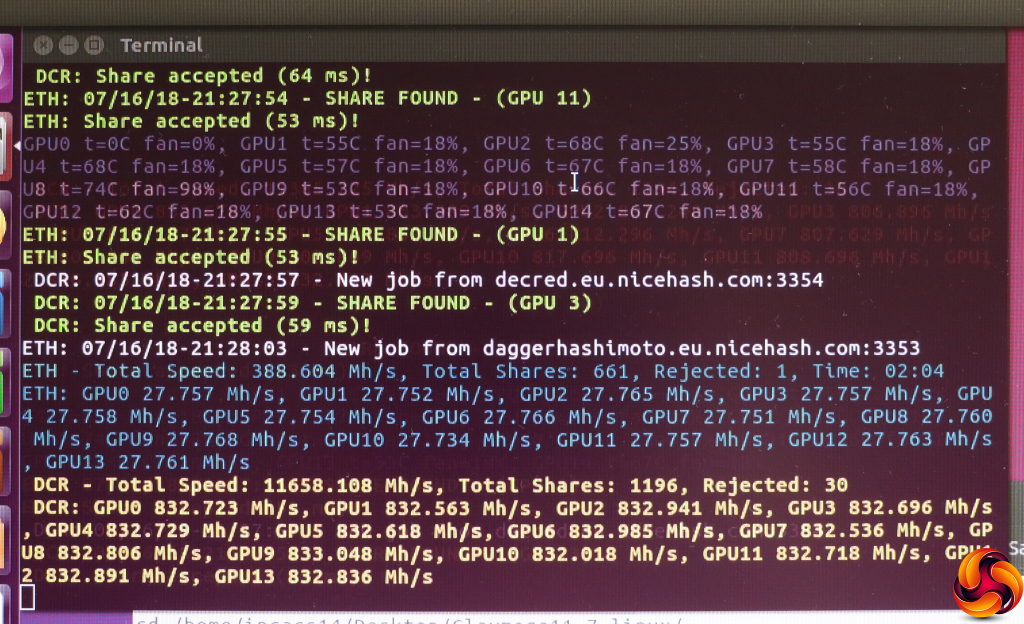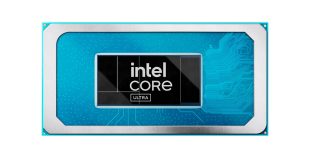The INCA CS-14 runs Ubuntu Linux, and this comes ready configured for you. It even includes some software like Libre Office and Firefox, should you want to do some word processing, spreadsheets or Web browsing on your five grand mining rig.
The system comes with the Claymore miner already downloaded, and on our system this was the 11.7 version.
Our sample went straight into mining, using this configuration file to set the stratum to use. However, we wanted to use the NiceHash pool so we could track our earnings using their API and Web interface, so we changed the command line.
It took some trial and error to get the command line right for NiceHash and our system configuration, with the help of the Claymore command line parameters. First, we had to set the -epool and -dpool URLs to NiceHash's stratum servers for dual DaggerHashimoto and Decred mining respectively. Then we added the Bitcoin address we wanted payment to go into (pixellated out in this image) via the -ewal and -dwal parameters.
The -epsw parameter sets the password for the pool, usually x. The -esm parameter sets the Ethereum Stratum mode for your pool, with 3 being for NiceHash. The -allpools parameter prevents mining on specific pools, whilst -estale sends stale shares to the pool, which can increase effective hashrate. The -r and -dbg parameters set restart and debugging options.
The parameter that we found we had to play around with most (and eventually copy from the original command file) was -di. This sets the GPUs being used for mining. The INCA CS-14 actually has 15 GPUs, with the first one on the list being the embedded Radeon graphics from the control SoC. You really don't want to use that for mining, because it's puny and actually makes the Claymore miner fall over. So the -di 123456789abcde parameter misses out GPU 0, which is the embedded Radeon, and just uses the 14 RX470 GPUs.
Once the Claymore mining software was properly configured, we were able to don our ear protectors and get mining. The INCA CS-14 ripped through jobs at a rate of knots, as you would expect, pumping out hashes faster than a breakfast fry up. Next we needed to work out whether we were actually making any money, or just lots of noise and heat.
 KitGuru KitGuru.net – Tech News | Hardware News | Hardware Reviews | IOS | Mobile | Gaming | Graphics Cards
KitGuru KitGuru.net – Tech News | Hardware News | Hardware Reviews | IOS | Mobile | Gaming | Graphics Cards


